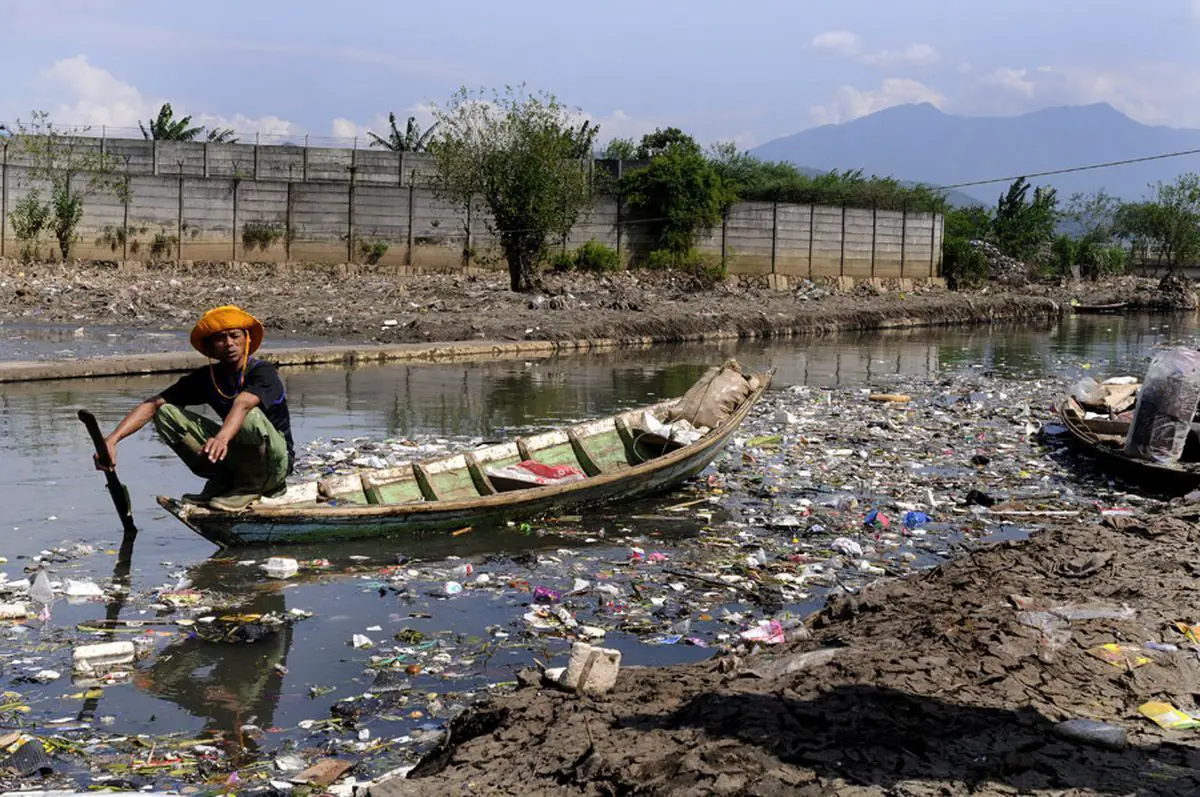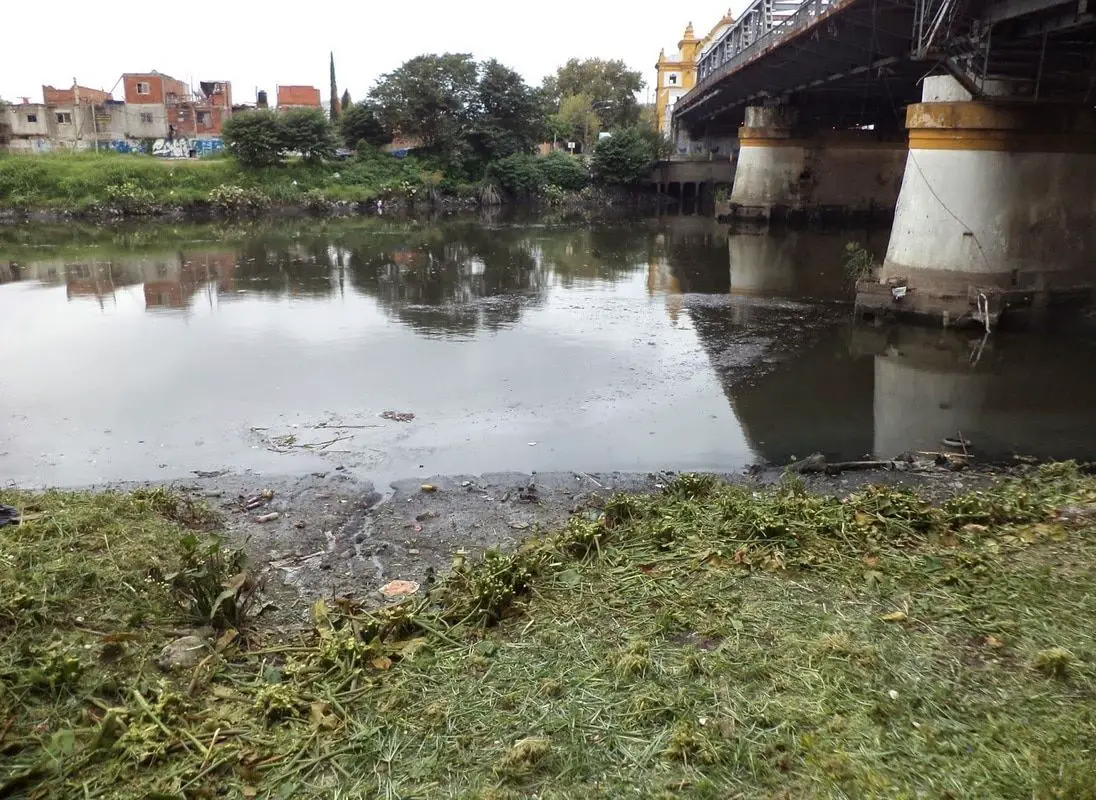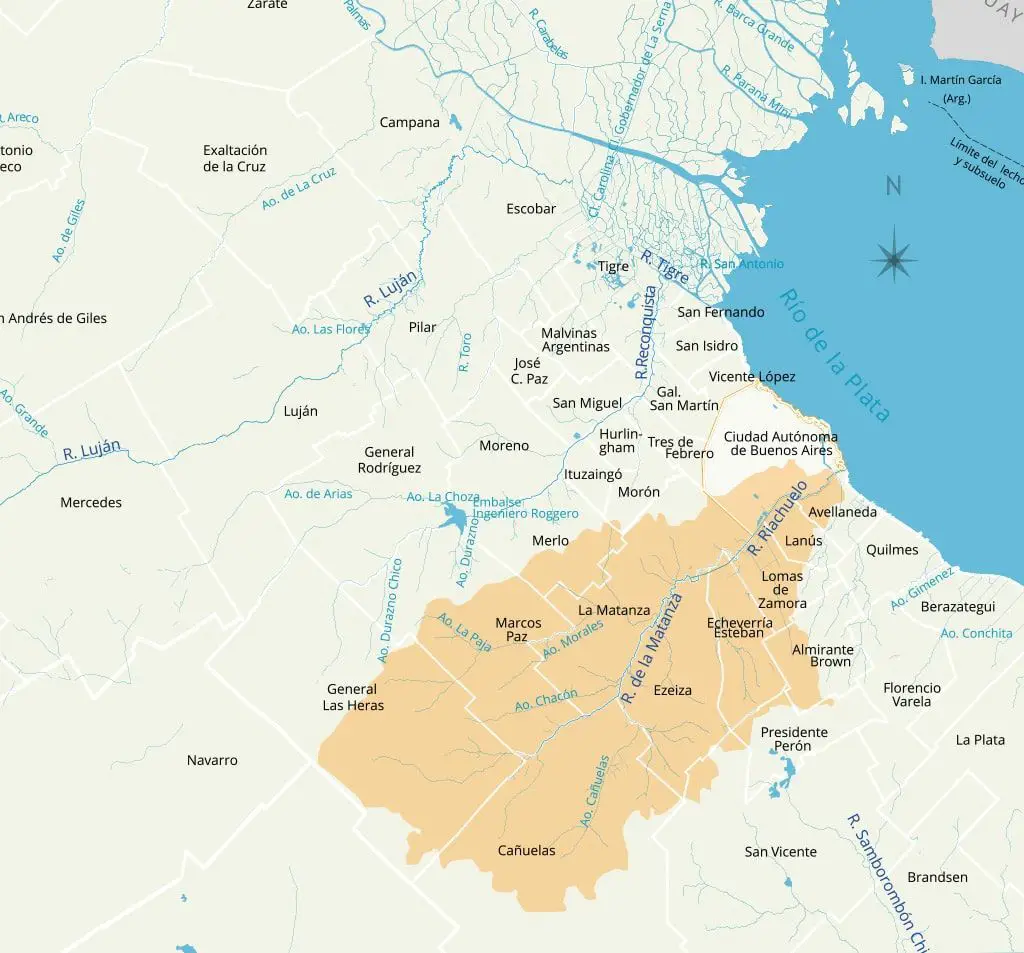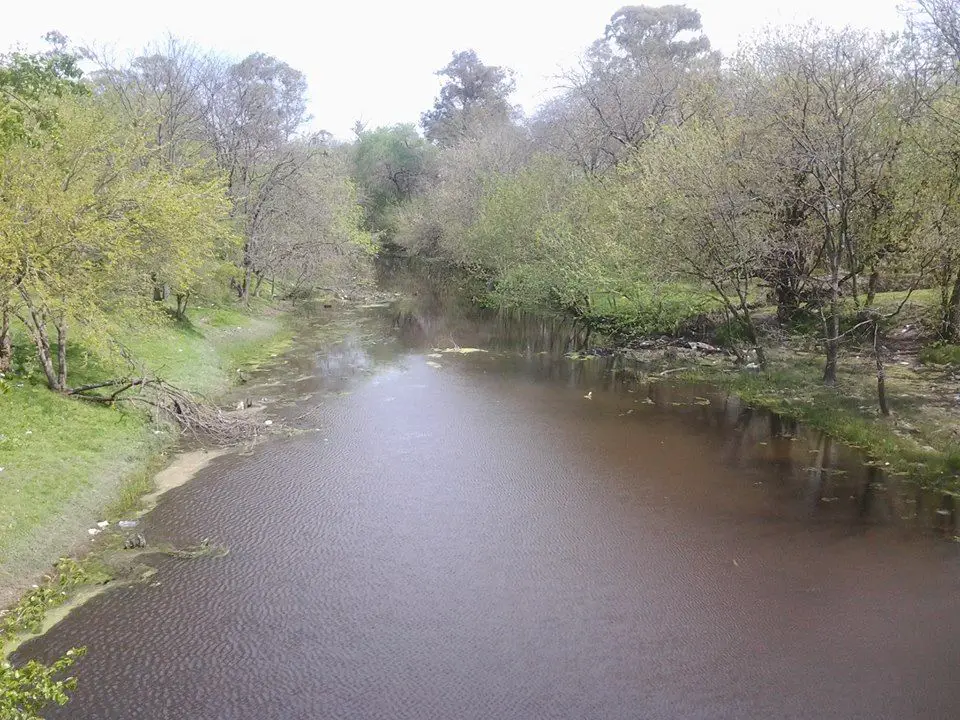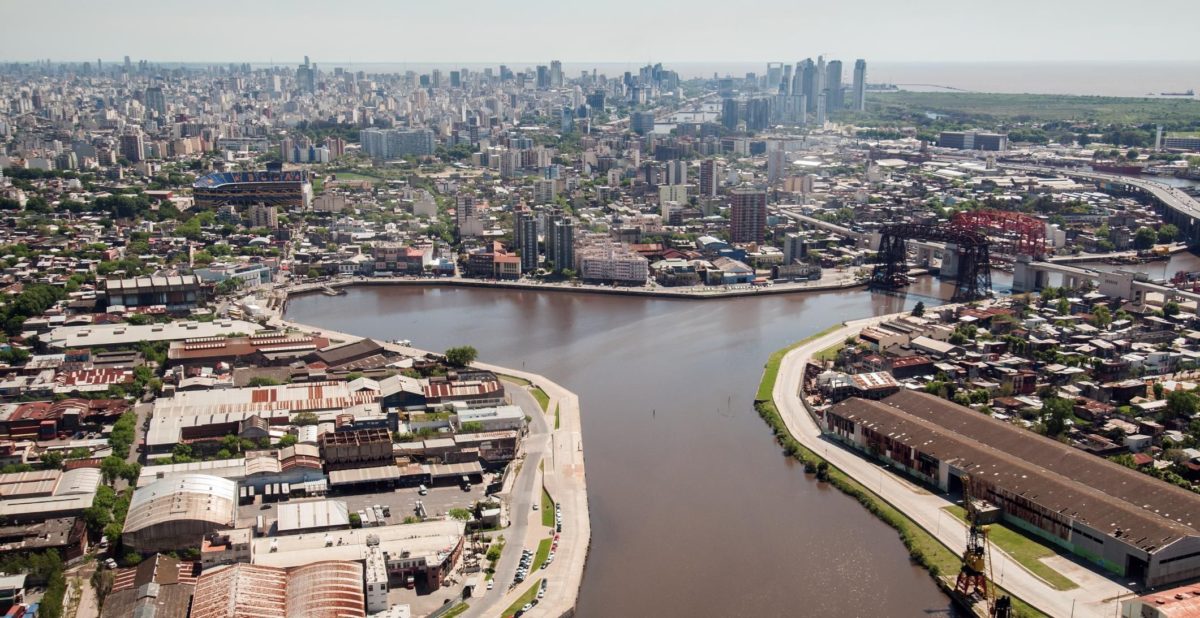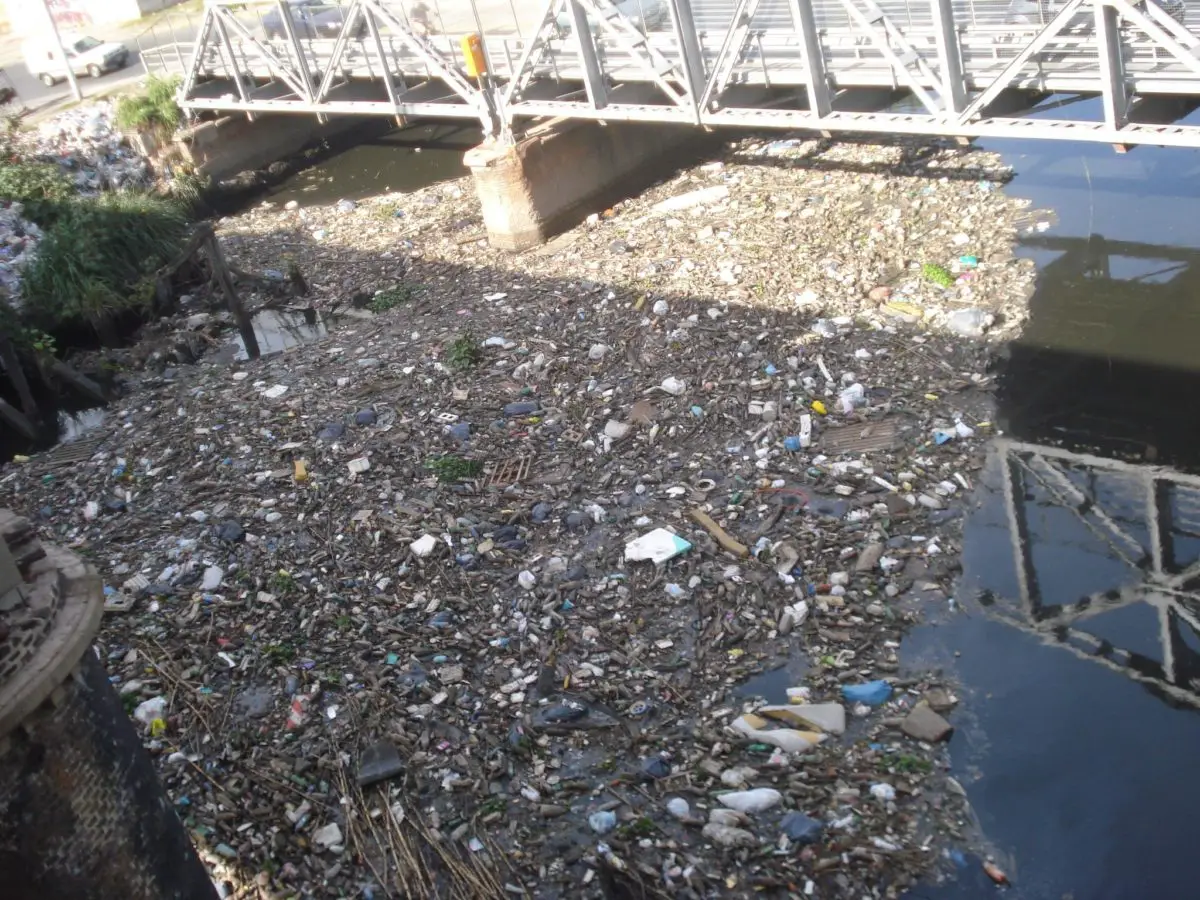The Matanza Riachuelo River is the second most polluted river in the Republic of Argentina, read on to find out more.
The Matanza River is known by several names, including Río de la Matanza, Río Mataderos, Río de la Manzana (‘the Manzano River’) or simply Riachuelo. It is a 64 kilometre (40 mile) long river in Argentina that rises in the Province of Buenos Aires and forms the southern boundary of the Federal District of Buenos Aires.
It flows into the River Plate. The neighbourhood of La Boca and the Boca Juniors football club are located near the mouth of the Riachuelo. The river has been channeled and rechanneled in some places, especially along its lower course.
Watch this video documentary about the Matanza River:
Indice De Contenido
The Matanza Riachuelo basin
Being a short river like the Rio Cosquin, the headwaters or basins of the Riachuelo are very close, in this case towards the town of General de las Heras, 6 kilometres west-northwest of Buenos Aires.
From its source to the Puente de La Noria bridge on Avenida General Paz, the river is generally known as the Rio La Matanza, and from there as the Riachuelo. About 3.5 million people live in its 2,240 km2 (865 square miles) drainage basin.
The south-easterly gale known as the Sudestada prevents the waters of the Riachuelo from reaching the Rio de la Plata, causing frequent flooding in low-lying areas such as La Boca and Barracas. Since 1995, several flood control projects have been carried out to prevent such incidents from happening, simply because of the amount of rubbish and waste, as happens on the Guaire River in Venezuela.
Watch this video to see how the pollution of this river has affected the people of Buenos Aires:
Map of the Matanza Riachuelo River
The main tributaries of the Matanza are the Cañuelas, Chacón and Morales Rivers in the Province of Buenos Aires, and the Cildáñez River (now canalised) in the Greater Buenos Aires area. Parallel to this river is the Lujan River.
Pollution in the Matanza Riachuelo River
The Matanza River receives large amounts of industrial waste from the numerous factories along the river, especially tanneries, making the Matanza Riachuelo a highly polluted river.
Among the most dangerous pollutants are heavy metals and effluents from the saturated layers of the basin, a contentious political issue since at least the administration of President Bartolomé Mitre in 1862-1868.
The plight of the Riachuelo has attracted the attention of other public figures, most notably the artist and Greenpeace activist Nicolás García Uriburu, who painted the canal green in 1970 and on World Water Day (22 March) in 2010 to raise awareness of the problem. Another nearby river is the Samborombón, but unlike this one, it is clean.
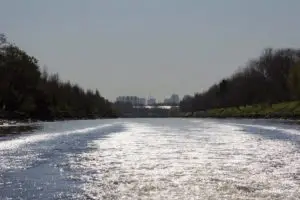 In 1993, President Carlos Menem’s environment secretary, María Julia Alsogaray, presented a three-year project to clean up the Riachuelo, which was approved but never started, let alone completed. The former official, daughter of conservative politician Álvaro Alsogaray, has been charged with embezzling public funds.
In 1993, President Carlos Menem’s environment secretary, María Julia Alsogaray, presented a three-year project to clean up the Riachuelo, which was approved but never started, let alone completed. The former official, daughter of conservative politician Álvaro Alsogaray, has been charged with embezzling public funds.
According to the Argentinean daily Página/12, of the $250 million budget, only $90 million remains; $6 million was lost in penalty interest, $150 million went to unrelated social projects and only $1 million was used for the actual clean-up.
Critics have also pointed out that this clean-up was in vain, as all that was done was to remove the sunken hulls of the ships, but nothing was done to prevent the newly abandoned ships from sinking.
President Néstor Kirchner’s announcement in 2006 that improvements to the Riachuelo would be a priority led to a period of optimism about the state of the canal, but although some efforts have been made, the river remains a source of health problems and urban decay for the surrounding neighbourhoods.
Environmental clean-up efforts have been complemented by urban regeneration proposals for the area. As of December 2013, no clean-up had taken place. The river contains industrial waste with high levels of arsenic, chromium, copper, zinc and lead.
About 60% of the 20,000 people living near the river basin live in areas that have been declared unfit for human habitation, leading to higher rates of diarrhoea, respiratory disease and cancer. It doesn’t help that residents have few sources of drinking water, leaving them dependent on the polluted river. But the problem is improving, thanks in part to a billion-dollar effort funded by the World Bank.
See what the pollution of the Matanzas River looks like:

